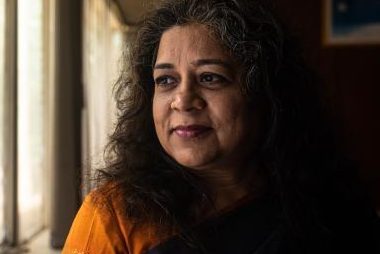By Dr Kalpana Apte, Secretary-General, Family Planning Association of India (FPA India) & Dr Manisha Bhise, Director Resource Mobilization, FPA India

Unfortunately, for centuries, women’s reproductive and sexual rights have not really been theirs to claim. The decisions and choices related to their bodies have been imposed by the community, religion, law, family and partners. The overarching reason espoused across, for such dominance has been of their biological responsibility of having been born with a uterus and ovaries. Women and girls thus become prisoners of pregnancy. In order to be recognized as successful and real women, they must bear pregnancy and have children of the desired nay, favoured gender. Enabling a woman to exercise her right to plan and space her pregnancy through contraception is the only way to keep her free from this prison of an unwanted and unplanned pregnancy.
In fact, biology is enabling. Yuval Noah Harari has said very famously that ‘Biology enables, Culture forbids’. Biology is willing to tolerate a very wide spectrum of possibilities”. Yet, women do not get to enjoy the possibilities that come from the advancement of medical technology, testing the boundaries of biology.
Across the world, medical and technological advances have made it possible to rise above biological limitations and challenges. Be it artificial limbs, replacement of diseased organs or even In Vitro Fertilization as well as implantation, Surrogacy for pregnancy, as also various innovative contraceptive methods, are recent scientific advances supporting the realization of reproductive rights of men and women. However, most women are unable to enjoy such progress, as the access to such newer contraceptive methods is not readily available either due to policy approvals or field level implementation issues. It was a long journey of 21 years for contraceptive injection DMPA to be available in public sector health care system. Government health care is still the primary source of contraceptive supplies and cares for a majority of women in India. Any contraceptive method, that is not available in the government system will be limited to a select few women who can afford private health care.
In India, there are many methods like Implants, Sub-cutaneous injections of DMPA, Vaginal Rings, Levonorgestrel Intrauterine Systems, the newer generation of combined oral pills containing drospirenone and ethinylestradiol etc. These provide additional choice, particularly for women who cannot use other methods due to existing clinical conditions or lifestyle issues. Unfortunately, most of these newer methods are only available in the private sector, not reaching poor and marginalized communities who depend on government health supplies.
Ensuring Women’s Health and longevity of Life
In spite of tremendous medical advances and a fairly robust public health programme prioritizing maternal health, Indian women are at an unacceptably high risk of mortality or ill health due to pregnancy-related causes. Most of these pregnancies are either unplanned or unwanted. Here, lack of modern technology, lack of resources to shift her to a higher facility in crisis or lack of infrastructure is not the root cause. The root cause still is apathy and neglect at household and community level. Her life can be saved if it is deemed to be valuable culturally. That it is not so, is evident through latest Sample Registration System (SRS) 2015-2017 bulletin for Maternal mortality ratio (MMR) that tells us that still 122 women per 100,000 live births, die due to pregnancy and related causes. Extrapolated to India’s population of married women in the childbearing phase, this becomes an alarming figure. Rights-based contraceptive use is one of the most simple and affordable strategies to reduce maternal mortality by preventing unwanted and unplanned pregnancies.
Claiming Sexual Health and Rights
As we see increasingly, sexual and reproductive health choices and decisions are being polarised among men and women. Whether it is choice and timing of a partner, consent or dissent to have sex, to use a contraceptive option, to continue a pregnancy or not, all these sexual and reproductive rights cannot be enjoyed by women independently of their free will. Often sex is seen as a marital duty and for procreation. Further, communication on sex and sexual pleasure is not common among married couples.
Rights-based access to contraception which includes counselling and post contraceptive support for the woman as well as her partner goes beyond claiming their individual reproductive right to procreate as and when they plan to do so. It ensures that they can claim their sexual right to pleasure, free from unwanted pregnancies and ill health. It helps in reducing maternal ill health, slowing population momentum and ensures that men and women are able to lead happy productive lives. Contraceptive use is one of the most economic strategies for ensuring multiple gains related to public health in India.
Slowing Population Momentum
It needs to be noted that the current population growth is not due to a high fertility rate but due to population momentum. India has more than 50% of its population below the age of 25 and more than 65% below the age of 35. India continues to add about 18 million people per year because more than 50% of the population is in the reproductive age group. It is this large base of young people which imparts momentum to the growth of population.
Integral to poverty alleviation
Empowering women and men with education, equal opportunities and comprehensive reproductive services including family planning promote social and economic development. High quality, comprehensive and rights-based SRH strategies (including family planning) should be at the core of poverty alleviation efforts in our country.
FPA India provides a wide range of contraceptive choices, including newer methods, ensuring that it reaches most poor and vulnerable communities. Over 16 lakh men and women receive contraceptive services annually through FPA India. Counselling and care are continuously provided to them which helps them to understand their bodies, initiate discussions among couples about their sexual needs and pleasure as well as help them to continue a method, till they are ready to plan their pregnancy.
This blog was first published in HelloPost